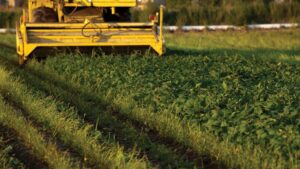As the U.S. gears up for spring planting, there’s a lot to consider for the year and beyond. But, what’s one thing that ag retailers should have on their mind? According to CoBank’s new report entitled “Ag Retailers Prepare to Navigate 3 Emerging Risks,” there are three risks that will affect retailers for the next five years:
- Changing consumer needs
- Less capital
- The rising price of property casualty insurance
These risks could depress profit margins and challenge traditional business models in the years ahead, CoBank says in a release. This downturn in the crop cycle is predicted to happen in 2024 or shortly thereafter, which will cause lower grain prices and financial pressure at the farm level. Combine that prediction with the newly emerging risks, and it has business implications that ag retailers should begin to prepare for.
“Grain and farm supply cooperatives delivered tremendous value to their customers over the past three years of extreme volatility in prices and economic activity stemming from COVID-19,” said Kenneth Scott Zuckerberg, lead grain, farm supply and biofuels economist for CoBank, in the release. “Unfortunately, the post-pandemic world is one that features a variety of new risks. The good news is that ag retailers and farm supply co-ops can develop risk mitigation strategies before the eventual cyclical downturn occurs.”
CoBank says lower levels of farmer working capital during the current upcycle suggests growers will cut back on input purchases more dramatically during the next downturn. Total farming working capital during the 2021-2022 crop cycle peak averaged at $138 billion, which is down from the $215 billion during the 2012 peak — these lower levels of working capital could be a result of strategic purchases of equipment while interest rates were at historically low levels. But, the reality is that farmers and ranchers will have less available cash to purchase inputs in the next downturn.
The rising cost of property insurance is also going to pressure farm supply cooperatives’ profitability, as the cost of property-casualty premiums has risen between 25% and 75% for the 2023 season due to an increase in claims from natural disasters. Losses from extreme weather totaled $170 billion in 2022, which was well above the long-term average.
Make sure to read the full report from CoBank to understand what shifts to make for the long-term.













